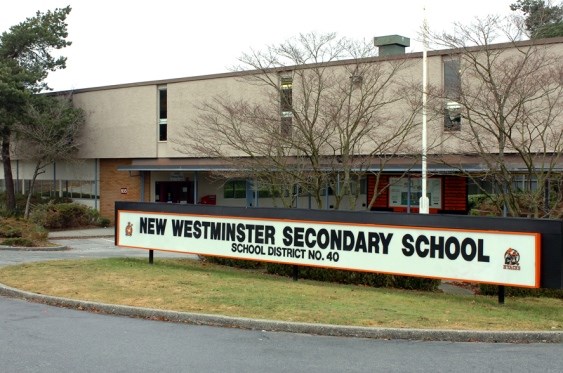A recent consultant’s report says an archeological dig is the only way to determine the extent of the old cemetery on the New Westminster Secondary School site.
School board chair Jonina Campbell said the report provides more information on the complicated site but won’t stifle progress on the decade-long bid to get a new high school in the city.
“I have been assured by our secretary treasurer and staff that this will not hold up the high school project, that the information in here is information that helps us understand the site better,” Campbell told The Record. “We are in conversations and moving forward on the project, but this information is not going to hold up the building of the high school. Once we know the footprint for the new school, we ask for designs for that footprint.”
Secretary-treasurer Al Balanuik told The Record he could not “definitively” say that Golder Associates’ findings will delay or alter the high school replacement project.
“I can’t say definitively,” Balanuik said. “My sense is that information is important, so this is additional information to inform decisions regarding the capital project. … It is part of larger package of information that been compiled and shared with respect to the site.”
The fact is the New Westminster school district isn’t footing the bill for the project that is estimated to cost $100 million to complete and is one of the most complicated and costly school replacement projects in the province.
It’s up to the provincial government what it’s willing to shell out and what it’s willing to risk for the school that parents in the city have been begging for more than a decade.
The Record contacted the Ministry of Education for a comment on the report and the project in general.
The ministry received a draft document from the New West school board about the New Westminster Secondary School site, communications staff member Matt Silver said. Ministry staff are reviewing this draft and continue to work with district staff, he added.
Meanwhile, Campbell is encouraged by the fact that the school district opened a new elementary school last month and has started construction on a new middle school. The high school replacement was always slated to be the final project of three new schools to allow for the transition of students.
The latest ground-testing Golder report – a previous one was done in 2007 – was initiated by project manager Jim Alkins in 2012 and was undertaken with a goal to have a better understanding of the site and get a sense of the contingency costs, Campbell said.
Electromagnetic and ground-penetrating radar investigations were conducted in three areas of the high school site.
The previous report found that two areas within the teacher’s parking lot in the northwest portion of the site detected what seem to be graves.
Similar detections were found in areas of the school along Eighth Street at the front of the school. While the geophysical anomalies could be graves, they could also be due to other unidentified sources, the report states.
“When I received and read the report, I saw it as building on the 2009 report,” Balanuik said. “I didn’t see anything significantly new or different from what had been reported previously.”
Alkins could not be reached for comment on the report. Alkins has been overseeing the three new school projects for the district for six years. His company, Alkins Project Services Inc., which also pays subcontractors working on the project, has received $1,382,901 for its work on the schools.
The Record has requested the amounts paid to Golder and Associations for the two reports related to ground testing, but they weren’t available at press time.
Last spring, Campbell told The Record she anticipated a contract agreement with the provincial government for a replacement high school to come by the end of the school year. It never did.
“We did expect a project agreement in June 2014 – sometimes things get delayed,” Campbell said. “The conversations between us and the ministry continue, and we’re hopeful that that’s going to be something that produces a project agreement soon.”
There are no plans to do any costly archeological digging around the school, Campbell said. The high school was built over an old cemetery, which was in operation between approximately 1860 and 1920. The cemetery was a burial site for marginalized groups, including minorities, the poor, criminals and the sick.
In the 1950s, the high school was built on the site. The extent of the cemetery came to light in 2007.



